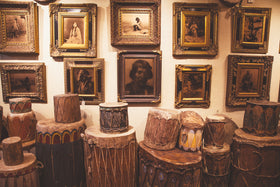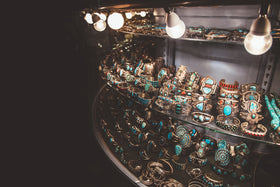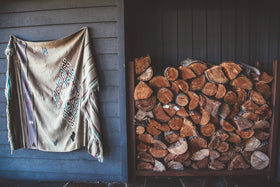Native American Totems

Totem poles are a Northwest art form most commonly carved of Western red cedar by the indigenous tribes of the Pacific Northwest coast. The word “totem” is derived from the Algonquian word Odoodem, meaning “kinship group.” The carvings symbolize ancestors, cultural beliefs, tribal legends, family legends, sacred beings, culturally important animals and historical events.
Accounts by European explorers traveling along the coast document “posts” as early as the late 1700s. Prior to the 19th century, the lack of efficient carving tools and leisure time delayed the development of more elaborately carved poles. The carving tools were made of stone, shells, or beaver teeth. With the introduction of metal carving tools and axes, there was both increased production and detailed carving.
There are four separate regions related to Northwest coastal carving styles:
- Northern Style: the predominant tribes in this area are Tlingit, Haida and Tsimshian.
- Mid-Coast Style: the predominant tribe is the Kwakwaka’wakw.
- West Coast Style: the predominant tribes are the Nuu-chah-nulth and Makah Olympic Peninsula
- South Coast Style: comprised of the Coastal Salish and many of the tribes in the Seattle and Portland area.

Each of these styles have similar design elements. However, there are various differences, both strong and subtle, that help to identify them. The two northern styles, North Coast and Mid-Coast, tend to have more angular and dramatic features. West Coast and South Coast styles tend to have softer features.
There are six basic types of large totem poles: house frontal poles, house posts, mortuary pole, memorial pole, welcome pole and shame/ridicule pole.
The Indian New Deal of the 1930s established the Arts and Crafts Board, which facilitated the sale of Native-carved totems, hence the production of shelf totems from 4” to 3’. Many of these were copies of larger totems and were sold to tourists and collectors from Seattle to Juneau.

Large outdoor totem pole in British Columbia.
Characters may appear as stylistic representations or may be carved more realistically. Some of the more common characters seen on totem poles are:
- Bears- representing the value of raising children above all else. The bear mother defends her children ferociously against enemies.
- Wolf – the family was heavily involved with the sea as fisherman. The belief was the wolf was a whale which changed form to be on land.
- Beaver – the family unit is serious about avenging wrongs done to them.
- Thunderbird – usually at the top of the totem, signifying the family has been protected from danger.
Cisco’s has an extensive collection of both shelf totems and outside totems, ranging from 5’ to 20’. Click here to view them all!





